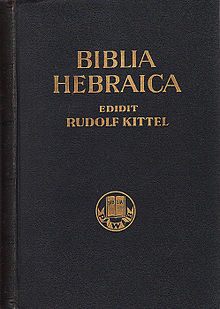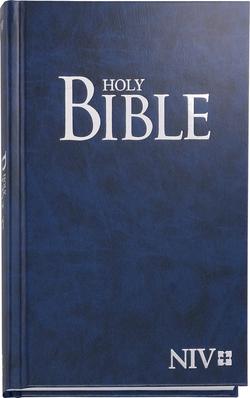
The New International Version (NIV) is a translation of the Bible into contemporary English. Published by Biblica, the complete NIV was released in 1978 with a minor revision in 1984 and a major revision in 2011. The NIV relies on recently-published critical editions of the original Hebrew, Aramaic, and Greek texts.

The Vulgate, sometimes referred to as the Latin Vulgate, is a late-4th-century Latin translation of the Bible.

The Masoretic Text is the authoritative Hebrew and Aramaic text of the 24 books of the Hebrew Bible (Tanakh) in Rabbinic Judaism. The Masoretic Text defines the Jewish canon and its precise letter-text, with its vocalization and accentuation known as the mas'sora. Referring to the Masoretic Text, masorah specifically means the diacritic markings of the text of the Jewish scriptures and the concise marginal notes in manuscripts of the Tanakh which note textual details, usually about the precise spelling of words. It was primarily copied, edited, and distributed by a group of Jews known as the Masoretes between the 7th and 10th centuries of the Common Era (CE). The oldest known complete copy, the Leningrad Codex, dates from the early 11th century CE.

The New American Standard Bible is a translation of the Bible in contemporary English. Published by the Lockman Foundation, the complete NASB was released in 1971. A new revisions were published in 1995 and 2020. The NASB relies on recently published critical editions of the original Hebrew, Aramaic, and Greek texts. It is known for preferring a literal translation style that generally preserves the structure of the original language when possible, rather than an idiomatic style that attempts to match natural English usage.
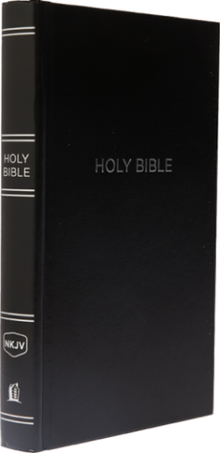
The New King James Version (NKJV) is a translation of the Bible in contemporary English. Published by Thomas Nelson, the complete NKJV was released in 1982. With regard to its textual basis, the NKJV relies on a recently published critical edition for the Old Testament, while opting to use the Textus Receptus for the New Testament.

The Leningrad Codex is the oldest complete manuscript of the Hebrew Bible in Hebrew, using the Masoretic Text and Tiberian vocalization. According to its colophon, it was made in Cairo in AD 1008.

The Biblia Hebraica Stuttgartensia, abbreviated as BHS or rarely BH4, is an edition of the Masoretic Text of the Hebrew Bible as preserved in the Leningrad Codex, and supplemented by masoretic and text-critical notes. It is the fourth edition in the Biblia Hebraica series started by Rudolf Kittel and is published by the Deutsche Bibelgesellschaft (German Bible Society) in Stuttgart.
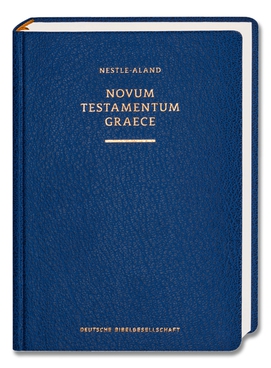
Novum Testamentum Graece is a critical edition of the New Testament in its original Koine Greek, forming the basis of most modern Bible translations and biblical criticism. It is also known as the Nestle–Aland edition after its most influential editors, Eberhard Nestle and Kurt Aland. The text, edited by the Institute for New Testament Textual Research, is currently in its 28th edition, abbreviated NA28.

Rudolf Kittel was a German Old Testament scholar.

The Biblia Hebraica Quinta Editione, abbreviated as BHQ or rarely BH5, is the fifth edition of the Biblia Hebraica. When completed, it will supersede the fourth edition, the Biblia Hebraica Stuttgartensia (BHS/ BH4).
James Alan Groves was a Hebrew Bible scholar, theologian, educator, and church elder. Born in Springfield, Missouri, he earned a Bachelor of Arts and Bachelor of Engineering from Dartmouth College in 1975, a Master of Arts in Religion and Master of Theology from Westminster Theological Seminary.
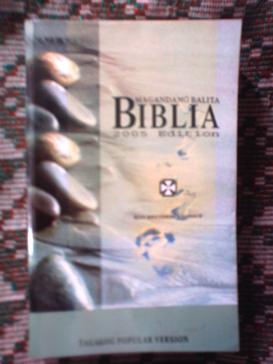
The Magandang Balita Biblia is a Christian Bible in the Tagalog language, first published by the Philippine Bible Society in 1973. It follows the tradition of the Good News Bible; however, it is not a direct translation but rather only a parallel translation of it.
The New English Translation of the Septuagint and the Other Greek Translations Traditionally Included under That Title (NETS) is a modern translation of the Septuagint (LXX), that is the scriptures used by Greek-speaking Christians and Jews of antiquity. The translation was sponsored by the International Organization for Septuagint and Cognate Studies (IOSCS). The Psalms were published in 2000 and the complete Septuagint in 2007.
The Hebrew University Bible Project (HUBP) is a project at the Hebrew University of Jerusalem to create the first edition of the Hebrew Bible that reproduces the text of the Aleppo Codex and includes a thorough critical apparatus.
Biblia Hebraica may refer to:

The Papyrus Fouad 266 are fragments, part of a papyrus manuscript in scroll form containing the Greek translation, known as the Septuagint, of the Pentateuch. They have been assigned palaeographically to the 1st century BCE. There is discussion about whether the text is original or a later recension of the Septuagint.
The Hebrew Bible: A Critical Edition, formerly known as the Oxford Hebrew Bible, is an in-progress critical edition of the Hebrew Bible to be published by Oxford University Press.
The Literal English Version of Scripture (LEV) is a translation of the Bible based on the World English Bible. Formerly known as the "Shem Qadosh Version", the title was officially changed in November 2016. It is considered a Sacred Name Bible rendering the name of God using the Hebrew characters יהוה, and that of Jesus in Hebrew as ישוע. It was created by a team of volunteers across the United States with additional proofing and editing assistance by individuals in Poland and Taiwan. Footnotes and appendices were written by the General Editor, J. A. Brown.
The Hebrew Old Testament Text Project (HOTTP) was an international and interconfessional committee of six Hebrew Bible scholars organized in 1969 by Eugene Nida, then head of the translations department of the United Bible Societies (UBS). This UBS sponsored committee was made up of Dominique Barthélemy, Alexander R. Hulst, Norbert Lohfink, W.D. McHardy, Hans Peter Rüger, and James A. Sanders. Nida served as chair of the committee with secretaries Adrian Schenker and J. A. Thompson. As a result of holding annual meetings from 1969 to 1980 to review issues of textual criticism deemed significant for translators, the committee issued a five-volume Preliminary and Interim Report between 1973 and 1980 which is also sometimes referred to and cited as "HOTTP."
